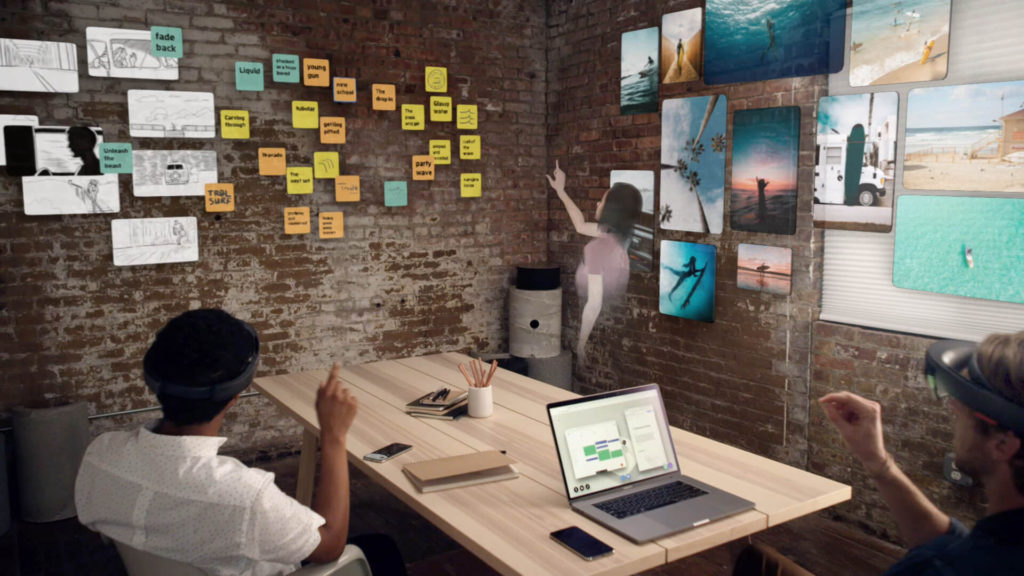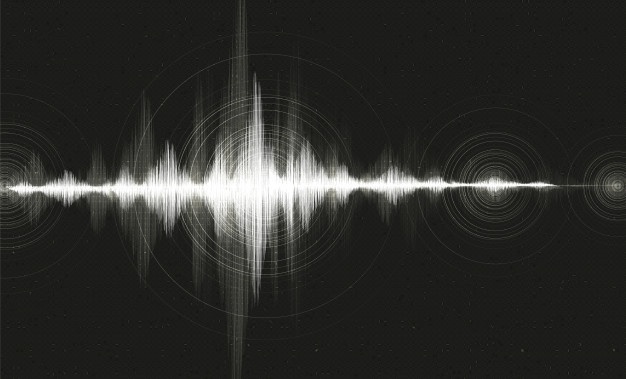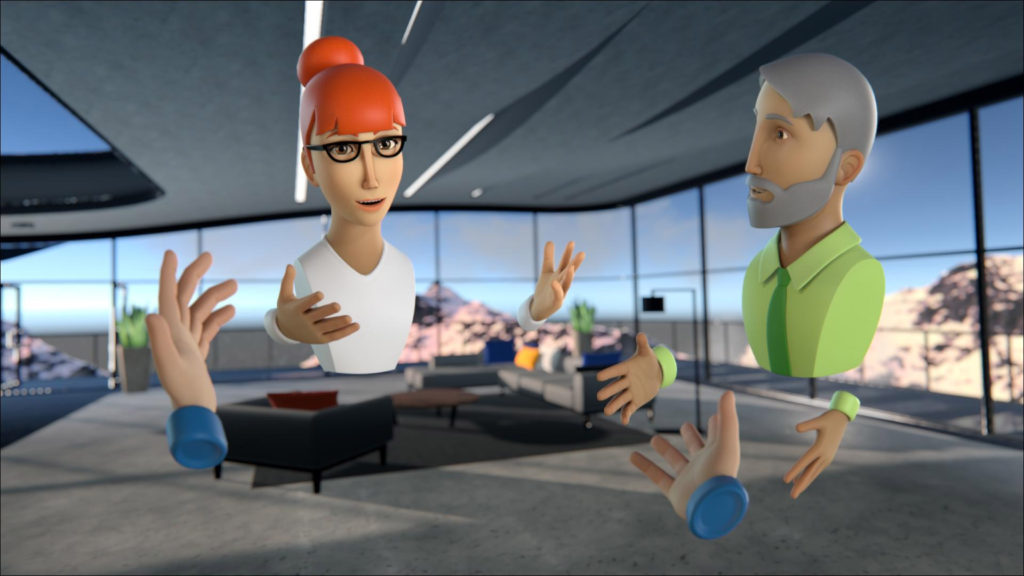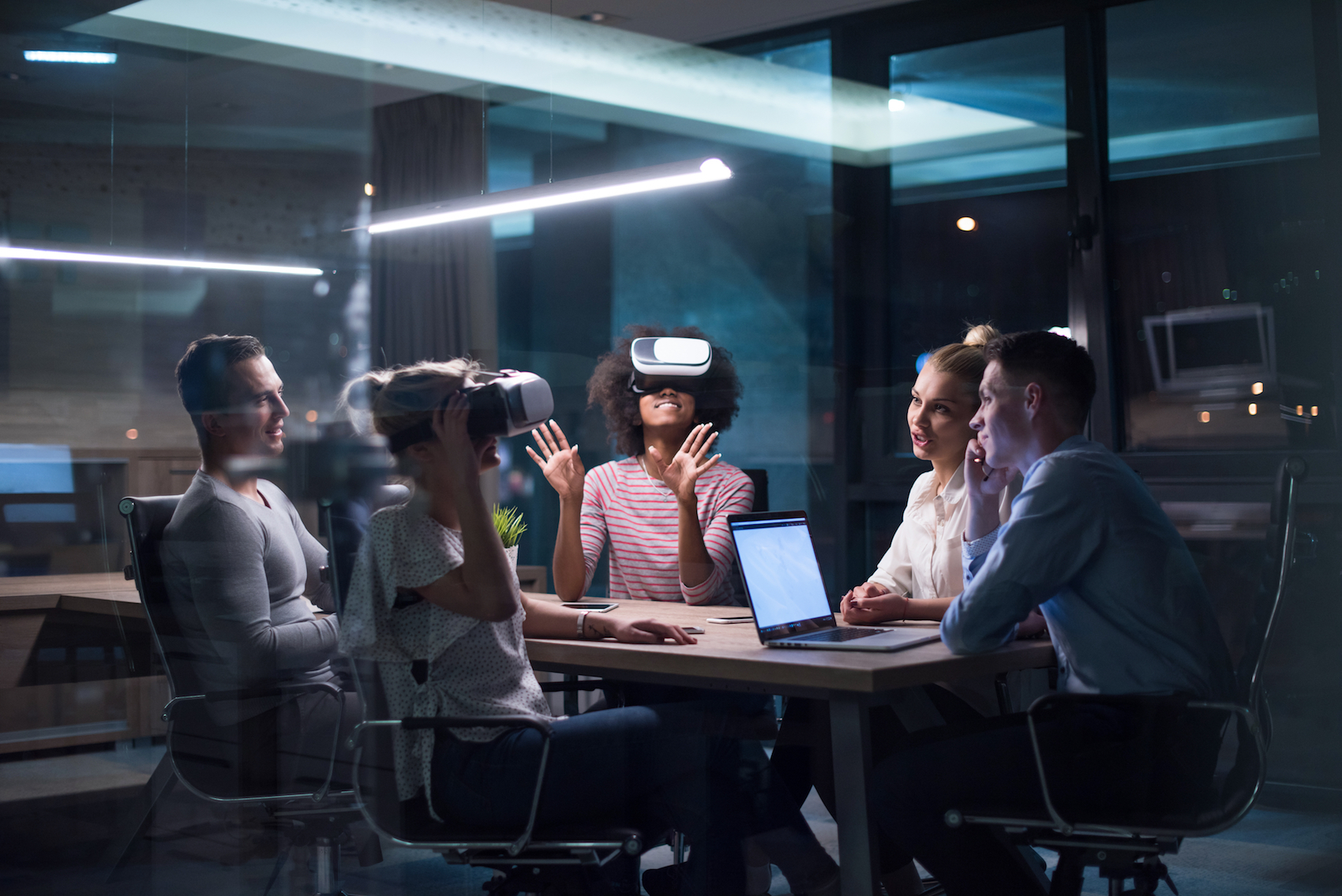The “new normal” means spending hours in front of a screen, conducting video conferences with coworkers or collaborating on intuitive project management software. While the current needs are being met, most professionals would agree that what they still miss every minute of the day is a physical reality. The feeling of being immersed in the physical world, interacting with real people and environments. The current model of video conferencing and traditional Internet-based collaboration is not sustainable over longer periods of time. And we all know this new way of working is here to stay. To ensure productivity over longer periods of time, replicating the experiences of a physical workplace is crucial. And this is where the concepts of Internet of Senses and Dematerialised office come in.
It’s not just about better video meetings and calls. The idea is try and replicate the feel, sight, touch and smell of physical workspaces. To that end, the interest in AR (Augmented Reality) and VR (Virtual Reality) technologies have increased in the recent years. These are important components. But the Internet of Senses goes much beyond that. It aims at digitally approximating the feeling of touch, taste, smell and the feeling of heat or cold of a given environment. Technology is evolving fast and soon we should see a manifestation of this IoS (Internet of Senses).
The pandemic has become a major digital tipping point for most industries. Since the outbreak, there has been a quantum shift in the priorities and needs of employees. They are stuck at home, with just wifi networks and laptops at their disposal. And since this seems like a medium-term scenario, most organisations are having to not only adjust to this, but innovating newer ways of working around this situation to maintain similar levels of productivity as before. This is driving them towards the vision of a dematerialised workplace, which would drive more efficiencies and cause sales to increase. The best part is, this will also reduce carbon footprint and have a positive impact on the environment.
– Yellow Slice
This new IoS might mean that in a decade, conventional laptops and desktops will be replaced by digital workstations that will enable a complete virtual experience, wherever the employee is situated. That would mean not only could one appear to be physically present in meetings, but engage in social interaction with colleagues where they can interact with objects.
One can even smell the food a colleague has brought to “work”. Interest in a fully immersive experience at the workplace is primarily driven by those who are already used to working with tech enablers like AR and VR. It is their current experience that makes them hopeful about what is possible with emerging technologies. According to a study by Ericsson, here is a lowdown on what they feel should be available in ten years, by way of IoS:
From a design perspective, what are the possibilities that the Internet of Senses can bring about?
- Spatial Video

An immersive video where one can physically interact with each other just like a physical meeting. AR & VR will be more widespread in internal communication as well as industrial demonstrations. This will replicate actual work environments and not just display faces on a screen.
- Digital sound tech

Headphones and audio devices that can not only transmit natural-sounding voices, but also translate what is being said in real time. These translations will also sound like the real voice of the speaker. It will also enable people with hearing disabilities to function at the peak of their abilities by directly sending sound signals to the brain.
- Social interaction at workplace

One aspect of office one sorely missed today is “water cooler conversations” that not only enhances team bonding but encourages clearer communication and seamless transmission of information in non-intimidating environments. As AR/VR and touch tech evolve, these environments and interactions can be duplicated by giving team members the feel of natural interaction, no matter where they are.
- Digital temperature tech
Wearable devices can make one feel the temperature of a given warehouse or office of a client, to give one the feeling of being physically present in that environment.

- “Digital Touch”
Tactile experiences can be delivered through devices such as smartphone screens which allow the user to feel the texture of objects. Digital icons and buttons can deliver touch and feel sensations as programmed.
- “Digital Smell”
Digital smell sensors installed in the premises will replicate actual smells, aroma, even stink of the workplace environment, depending on whether someone’s got a freshly baked cake or something is rotting in the garbage can.
- “Digital Taste”
In order to convey the taste & flavour of food products and other items on sale, devices can digitally communicate the taste of such items. During a coffee break, everyone in multiple locations can smell the beverage.
According to the Ericsson study, 74% of senior managers and 66% of middle managers feel that technology to digitally feel how difficult it is for a colleague to make a tough decision will be used in companies by 2030. This will enable users to “share” the stress of decision making and contribute to productivity by enhancing empathy.
Today, in 2023, no matter how distant many of these technologies seem, the truth is we are nearer to the practical application of these advanced technologies than ever before. In a world irreversibly transformed by a virus, we will require these innovations at the workplace to sustain productivity and also to retain our sanity, as we continue to work form distant locations.
FAQs For Dematerialised Offices
What is an example of a Digital Sound?
One example of digital sound is aiding people with hearing disabilities by directly sending sound signals to the brain.
What is the Spatial Video?
Spatial video is an immersive video where one can physically interact with each other just like in a physical meeting. AR & VR will be more widespread in internal communication as well as industrial demonstrations. This will replicate actual work environments and not just display faces on a screen.




